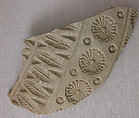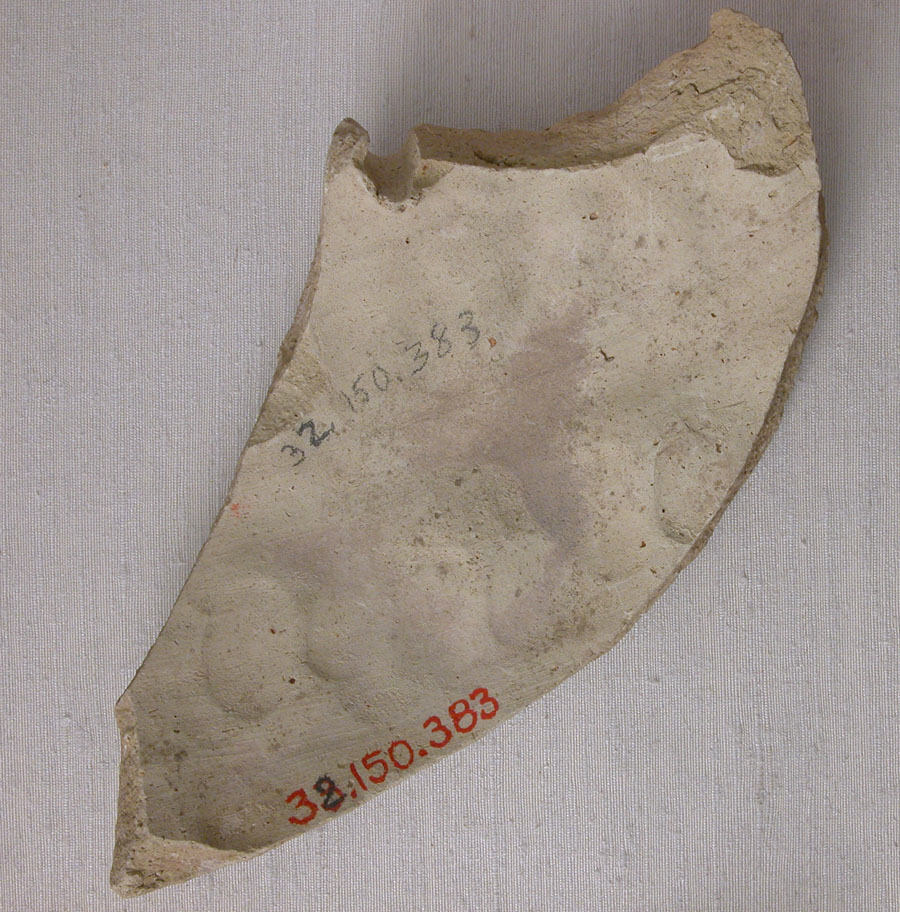Fragment with Stamped Leaves and Rosettes
Not on view
This ceramic fragment was excavated in Ctesiphon, the Sasanian metropolis and administrative capital conquered by Arab Muslim armies in 637. The city was known in Arabic as al-Mada’in, or "the cities", for its extended area. Arab historians indulge in describing al-Mada’in/Ctesiphon’s grand monuments, which obsessed Muslim rulers and may have acquired a symbolic meaning related to its imperial past. This was the case of the Taq-i Kisra, an impressively-sized ivan (a vaulted hall with one side open) partially dismantled to reuse its bricks in caliphal buildings in the new capital Baghdad.
Finds like this unglazed fragment attest to the patterns of continuity and change in material culture between the late Sasanian and the early Islamic period. The fragment bears a design of stamped leaves and rosettes found on late Sasanian and early Islamic unglazed wares. The decoration would have been obtained by juxtaposing the impression of small stamps, probably earthenware ones. At least four different stamps were used on this vessel. On the interior, fingerprints suggest that the vessel was made with a mold, against which the potter would press the wet clay.
Due to rights restrictions, this image cannot be enlarged, viewed at full screen, or downloaded.
This artwork is meant to be viewed from right to left. Scroll left to view more.



